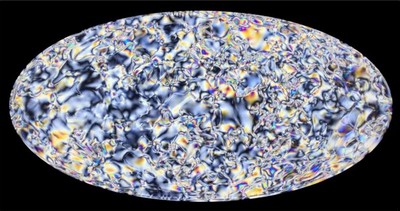Matter Matters
Shuyi Cao, Antonia Kuo, Furen Dai, Tiger Cai, Emily Cheng
Chambers Fine Art, New York
Through August 26, 2022
In much of today’s world, the accelerating narrative of technology and progress has resulted in an overly narcissistic point of view, where humanity has developed the misguided belief of having control over all things. We ignore the idea of our own insignificance in the greater cosmos and lose the sense of wonder and awe of where we are and what is unknown. This line of thought has led people to settle for a controlled 'one-click away' world, with a desire to continuously optimize and refine technology.
The historic changes and upheavals in society due to the recent global pandemic have caused a sense of disorientation, uncertainty, and dislocation of physical and psychological time. The upheaval has exacerbated ongoing imbalances in the global political and economic systems, and has forced many of us to think outside of the established, “technological progress” paradigm once again. The artists in this exhibition seek to pull the lens farther away and humbly look at and explore the hidden, impenetrable, and unexplainable things. From their own carried perspectives, their work reflects upon human existence from a broader dimension of space and time, in an attempt to see where we are and how far we are from everything.
Shuyi Cao’s work looks at geological history, examining the traces of biological existence that have been compressed and condensed into the earth’s crust. Her hand-blown clear and colored borosilicate glass pieces (Many-heads, etc.) resemble an aerial view of some unknown topography. With distinctive forms that evoke preconscious memories of primordial microscopic organisms, these fantastical creatures exude a mixed sense of familiarity and estrangement, perhaps recognized from past incarnations of our very biological and geological origin; while simultaneously encoding the clues of future evolution. Precarious Encounter (2021) imagines the interspecies relationship between fungi and its host body, exploring another form of entangled life through contagion and co-becoming.
Antonia Kuo looks at the spontaneous interaction of matter itself, using a photographic process to create chemigrams that blur the boundary between photography and painting. Matter collides with matter in unpredictable ways, much like human encounters. Conventional prints are processed relatively quickly in the darkroom. Chemigrams, by contrast, can be worked on for days or weeks, time enough for Kuo to selectively apply coats of developer, toners, dyes, and fixer to her paper. Perhaps the most remarkable feature of the chemigram process is that the practitioner can rearrange and alter the chemical steps in the service of whatever effect she desires. In Carpet Beetle and Sieve (in mauve), Kuo integrates several processes of image production from different periods (analog, digital, exposure) into one. As she creates the works, seemingly unquantifiable traces of movement of matter, such as light and time, are transformed, recorded, and developed into images. Bouncing between the controllable and the uncontrollable, the manufactured and the mutated, Antonia's works ultimately present images that reveal the delicate balance between man and matter.
Furen Dai critiques the institutional art system, examining the essence and positioning of cultural institutions whose role in documenting human culture is crystallized in Western aesthetics and bias. Dai wryly challenges museums and their colonial origins through her fresco works that depict barren museum pedestals. Based on a video piece in which she depicts a dystopian future where humanity has been lost due to a global pandemic, the empty pedestals are revealing in their design - created to elevate the objects they hold, but also stylized in a manner that subtly reinforces the highly categorized and Westernized point of view. At the same time, Dai’s works reference the often-invisible labor of craftspeople who shape museum spaces, and build the platforms and containers that elevate and protect the collection.
Like Dai’s narrative, Tiger Cai also frames his works in an imaginary post-apocalyptic era, but presents his story of the destiny of the human species from a cosmic vantage point, literally set in outer space. The death of his pet goldfish served as the introductory lesson to life and death in his childhood, and thus became an ongoing metaphor for the afterlife in his paintings. As the fish sails into the unknown, Cai zooms out beyond the confines of the Earth, contemplating human existence as a small part of the larger universe. His comets and asteroids that appear to be alive, in stark contrast to the geological forms that inspire Shuyi Cao’s work.
Similarly ‘cosmic’ in nature, Emily Cheng's paintings are charged with conversations about spirituality and the unknown energy of the universe. Her paintings invite introspection more than commentary. She no longer gazes at what is happening in the Anthropocene but instead moves beyond the established framework of "society" and "civilization" to the realm of metaphysical reflection. The geometric patterns and vivid brushstrokes that make up her paintings are suggestive of elemental forces and subject matter: magnetic fields, the body, and religious iconography. Symmetrical, diagrammatic shapes interact with velvety colors and flexible, curved line-work, tapping into what Cheng describes as the "potential of unseen things or unknown force".
All five artists are based in New York, and although their works are highly individual, the manner in which they deal with their chosen subject matter share a similar sentiment. Even before the pandemic brought much of the world to a sudden halt, these artists chose to work from a perspective outside of the common narrative. Now, as the world struggles to return to normalcy, their work serves as a reminder that humanity is only one small part of a greater universe.
CHAMBERS FINE ART
55 East 11th Street, New York, NY 10003
_________________


